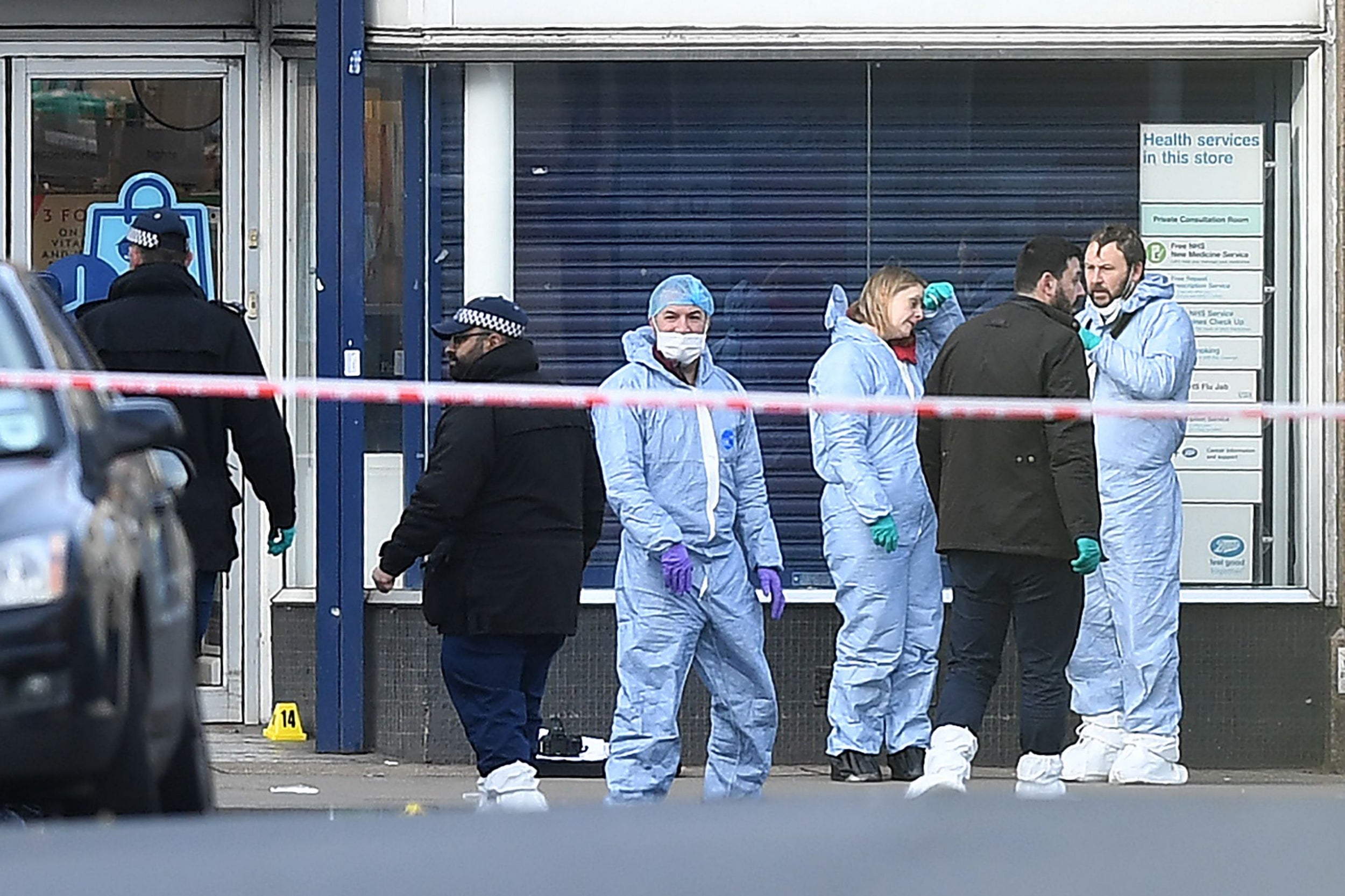Streatham attacker was part of interlinked web of terrorists in British prisons
Police warned that Sudesh Amman’s relationships with other terror offenders made him a ‘heightened risk’ before attack, writes Lizzie Dearden

The Streatham attacker was part of a network of terrorists who have been able to socialise inside the UK’s most secure jails, an inquest has revealed.
Sudesh Amman was known to have murderous aspirations almost two years before his own knife rampage, when police arrested him on suspicion of planning a terror attack.
But a Metropolitan Police assessment said networking inside HMP Belmarsh increased Amman’s capability and made him “one of the most dangerous individuals that we have investigated”.
His knife rampage in February 2020 was the third of four consecutive UK terror attacks carried out by serving or former prisoners.
It came a month after an Isis-inspired attack on prison staff by a terror offender and radicalised inmate at the high-security HMP Whitemoor in Cambridgeshire.
In November 2019, released terror convict Usman Khan had killed two people at a rehabilitation event at Fishmongers’ Hall.
In June 2020, a released prisoner who had not been convicted of terror offences murdered three victims in a Reading park.
Amman launched his attack 10 days after being automatically released from HMP Belmarsh, while under 24-hour surveillance by armed police.
MI5 and Scotland Yard mounted an intensive operation after being informed that Amman had voiced his wish to carry out an attack and told a fellow inmate he was “not finished with non-believers” days before he was freed.
Police asked prison officials whether Amman’s time in prison could be extended over a disciplinary matter, but were told it could not, and authorities imposed heavy restrictions under “multi-agency public protection arrangements”.
While inside HMP Belmarsh, Amman had demonstrated a “loathing towards non-Muslims”, claimed he wanted to kill the Queen, become a suicide bomber and join Isis, and said he wished he had been involved in the murder of Lee Rigby.
Prison intelligence reports showed he associated with several high-profile terrorists, including the Manchester Arena bomber’s brother Hashem Abedi.

He had been seen in “deep conversation” with the Parsons Green bomber, Ahmed Hassan, and was also linked with attack plotters Erol Incedal, Naa'imur Rahman and Umar Haque.
Some of the terror offenders named at the inquest have since been moved to other prisons, where they are believed to be widening their associations.
Amman was said to have formed a close relationship with Mohiussunnath Chowdhury, who slashed police officers with a sword outside Buckingham Palace in 2017.
Chowdhury was acquitted of terror charges over that incident but planned another attack after his release from Belmarsh, which was thwarted by an undercover police operation.
He spoke to undercover police of a “young, trusted brother” he met in prison, who he dreamed about committing a terror attack in London alongside.
At the time, the undercover officer interpreted Chowdhury’s supposed dream as a fiction to disguise his own plans for a lone attack, but others have questioned whether the fellow inmate could have been Amman – who was the youngest terror offender in Belmarsh at the time.
The prison’s governor told the inquest that she did not know if police had informed staff of Chowdhury’s claims or if there had been any investigation into whether the “brother” was Amman.
In a letter to his mother from prison, he described HMP Belmarsh as a “blessing” and added: “I used to ask Allah to give me good brothers and companions ... he answered my prayers and put me here.”

He became known to counter-terror police after a Dutch blog reported on a Telegram account – now known to be operated by Amman – voicing support for Isis and urging an attack on a pro-gay rights speaker in Hyde Park.
Amman was arrested on suspicion of planning a terror attack in May 2018, but later charged with the lesser offences of possessing and disseminating terrorist publications.
The downgrade meant that he was given a determinate prison sentence of three years and four months, and had to be released from prison automatically on 23 January 2020.
An intelligence update drawn up by the Metropolitan Police Counter-Terrorism Command ahead of a meeting earlier that month detailed Amman’s extremist activity inside prison, including the alleged radicalisation of other inmates.
“The collective view of the senior investigating officer, investigation team and all partner agencies [including MI5] is that he represents one of the most dangerous individuals that we have investigated,” the document added.
“Before he was imprisoned he was operating as a lone extremist without a network of like-minded extremists. Since being in prison this situation has changed and he has now built up relationships with other terror offenders and thereby presents a heightened risk.”
An “investigative strategy” drawn up on 10 January 2020 said terrorists inside HMP Belmarsh had given Amman contact details for extremist associates to contact on his release, adding: “There is a significant risk that Amman now has the capability to carry out an attack.”

Police said they looked at arresting Amman over handwritten Arabic notes, including a pledge of allegiance to Isis, found in his cell in December 2019.
But investigators concluded that they could not be definitively attributed to the prisoner, who was not thought to be able to write Arabic to that standard.
The finding suggested that another inmate may have given the notes to Amman, and there was also prison intelligence that he had been “sharing CDs” with other terrorists.
Jenny Louis, the governor of Belmarsh, defended its security protocols and said the jail housed a “difficult population” including a significant number of terror offenders.
She told the inquest that contact between inmates is monitored and that people can be moved around the prison to disrupt any concerning relationships.
Ms Louis said staff had used “disruption movements” around the prison for Amman, adding: “Because of comments he made, engagements with others, this was somebody who was trying to engage with others in a really unacceptable way in custody.”
Terrorist prisoners are offered courses aiming to help them disengage from their beliefs inside jail but Amman did not undergo the main Healthy Identity Intervention scheme.
He was also assigned a theological mentor under a Home Office programme but only met him once – four days before the attack.
The government opened three separation centres for the most influential terrorists in 2017, following recommendations from a review into Islamist extremism inside jails by former prison governor Ian Acheson.
However only two of the units, at HMP Frankland and HMP Woodhill, are currently in operation and questions have been raised about their effectiveness.
Officials argue that they are only one measure used to stop radicalisation in prisons, and say that putting all extremist prisoners together in the centres would defeat their purpose.
After the Streatham attack, the government changed the law to stop the automatic release of terror offenders at the half-way point of their sentences, and ensure they are assessed by the Parole Board before being freed.





Bookmark popover
Removed from bookmarks